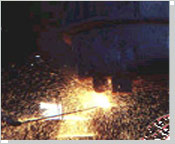 Open die forgings are done with repeated blows in an open die, with the operator manipulating the workpiece in the die. The process is called Open Die Forgings as the metal does not remain confined laterally by impression dies during the forging process. Generally flat dies are used for open die forgings. Round swaging dies and V dies can also be used together or with a flat die. Generally heavy parts like shafts are forged. Part weights can range from 5 to 5,00,000 lbs.
Open die forgings are done with repeated blows in an open die, with the operator manipulating the workpiece in the die. The process is called Open Die Forgings as the metal does not remain confined laterally by impression dies during the forging process. Generally flat dies are used for open die forgings. Round swaging dies and V dies can also be used together or with a flat die. Generally heavy parts like shafts are forged. Part weights can range from 5 to 5,00,000 lbs.
Open die forgings can forge all ferrous and non-ferrous alloys, corrosion-resistant refractory alloys and materials like age-hardening super alloys
Operating Open Die Forgings- First the ingot or billet has to be lengthened either by reducing the cross-section or by drawing out.
- Enlarging the diameter of the ingot or billet by upsetting or reducing the length.
- Sometimes to forge a rough contoured ring a combination of upsetting, drawing out and piercing method is combined with forging
The forging workpiece is continuously hammered or pressed, and manipulated repeatedly between the dies until it reaches final forged dimensions. The process is not exactly precise and considerable workpiece stock allowances are kept to accommodate forging irregularities. The forged part is then machined (both rough and finish) to final dimensions. The metal to be forged is always hot worked above their recrystallization temperatures. It is done as the repeated change in the workpiece positioning makes its temperature fall below the recrystallization temperatures. It has to be re-heated before further forging takes place. For e.g a 24 ft long and 2 ft diameter shaft requires four to six heats before the forged dimension is achieved.
A sub process of open die forgings is the Compression between flat dies, or Upsetting process. Whereby an oblong workpiece is placed at the end of a lower die whose height is reduced by the downward movement of the top die. The friction between the end faces of the workpiece and dies prevents the free lateral spread of the metal. Thus a barrel shape of the metal is produced. The barrel is resistant to deformation as contact with the cool die surface chills the end faces of the metal.
